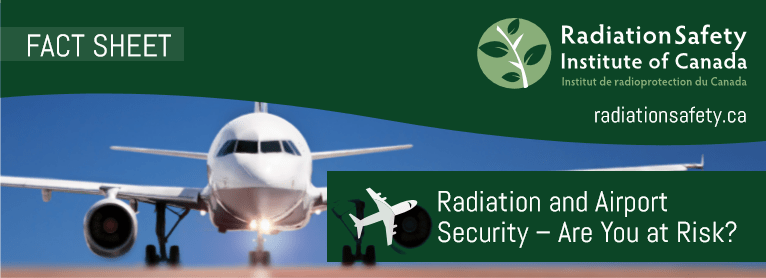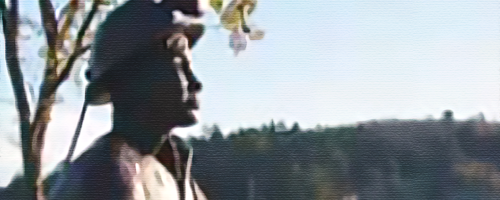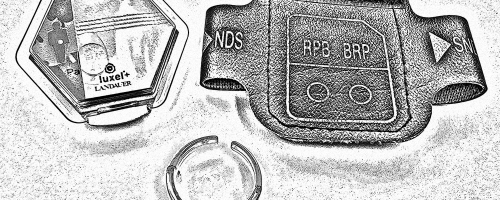WHY IS RADIATION USED IN SECURITY SCREENING?
Radiation provides a reliable way to detect prohibited items such as weapons and explosives, in a quick and reproducible way, without harming the person or items being examined.
WHAT TYPE OF RADIATION IS USED?
A few different types of radiation are used in security screening at airports.
Metal Detectors: Metal detectors are instruments that generate and measure a low strength magnetic field. When this field passes close to a metallic object (perhaps keys in a pocket), the magnetic field is changed, and this is detected by the sensors in the instrument. Magnetic fields are non-ionizing radiation, and exposure to these low level magnetic fields does not cause biological damage.
Baggage Screening: In airports, luggage is scanned using x-ray scanners. Carry-on luggage passes through x-ray scanners at the security checkpoint, while checked baggage passes through x-ray or CT (Computed Tomography) scanners in secured areas of the airport. The x-rays in these scanners are used to create pictures of what is inside the bags. Filters in the system allow the images to be colour-coded based on the density of the luggage contents (organic materials (e.g., apples) would be coloured differently than glass or metals, for example). Although these scanners use x-rays, a type of ionizing radiation which can cause damage to cells leading to cancer, the scanners are well shielded. In fact, the scanners are so well shielded that Health Canada does not require operators of baggage x-ray scanners to wear dosimeters, even though these workers are beside the equipment all day long. Some people have expressed concerns about the effects that radiation will have on the contents of their luggage. It is important to note that the x-rays in the baggage scanners cannot make the luggage or contents radioactive. In fact, the only potential effect on contents would be for photographic film: extremely high-speed, sensitive hotographic film might be somewhat exposed by the x-rays, but regular film and ordinary personal objects are not harmed.
Full Body Screening: Screening of travelers using full-body scanners is getting to be more common in airports, and is performed to reveal objects, including weapons and explosives, that could be concealed under clothing. Two types of full-body scanners are currently in use around the world: backscatter scanners and millimeter wave scanners. Backscatter scanners send out low-energy x-rays towards the person being scanned. The x-rays bounce off the skin of a person, and items under their clothing, and are detected by the scanner and used to create an image of the surface from which they bounced off. Because these very low energy x rays bounce off the skin, rather than going through or being absorbed by the person, very little dose is received by the person being scanned, and there is little health risk associated with the scan. Millimeter wave scanners work in a similar way, but use radiofrequency (RF) waves rather than x-rays. As the millimeter waves are non-ionizing and of low intensity, there are no health risks associated with these scans. In Canada, only millimeter wave scanners are used.
RESOURCES
[1] Health Canada, Airport Full-Body Scanners
[2] Full-Body Scanners






